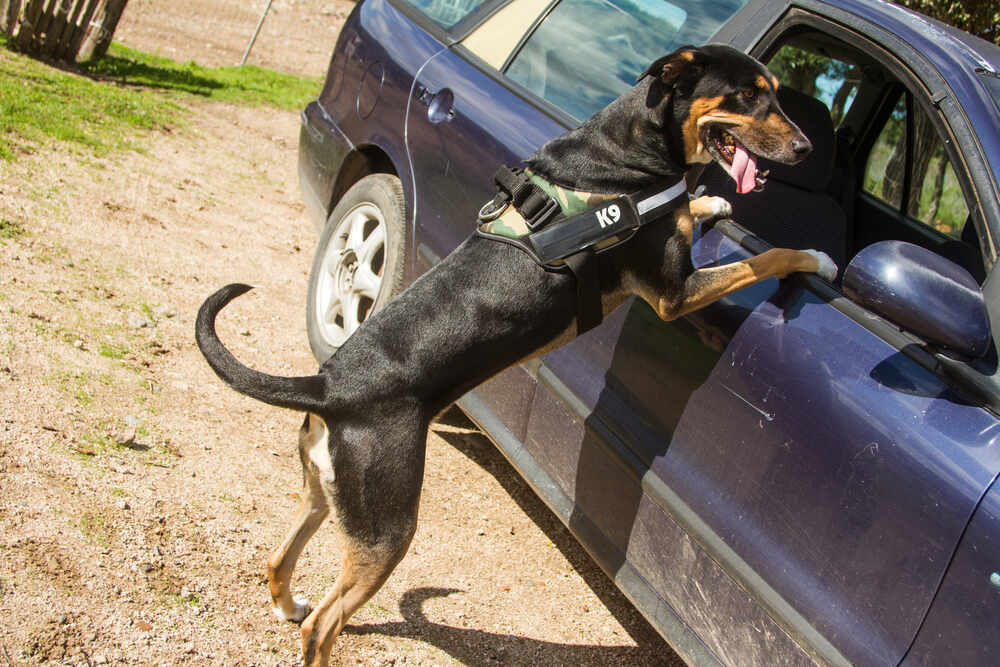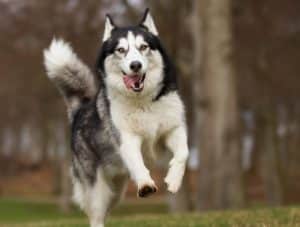Dogs have a unique function in the Search and Rescue community. Their remarkable sense of smell, improved hearing, night vision, stamina, and flexibility have all been shown to be quite helpful in the search for missing, injured, or lost persons.
The benefits of having search and rescue dogs are numerous due to their exceptional talents. So, in this article let’s learn about the role of search and rescue training.
Here’s a breakdown of the information about search and rescue dogs, including training methods and key takeaways:
What is Search and Rescue (SAR)?
- SAR involves utilizing trained individuals, often with canine partners, to find missing, lost, or endangered people.
- These teams provide invaluable assistance in finding victims quickly, sometimes saving lives.
- While many SAR dogs train and live with their handlers, specialized facilities also exist for training.
Types of Search and Rescue Missions
- Ground SAR: Covers common areas like fields, towns, and forests.
- Mountain SAR: Specializes in challenging, mountainous terrain.
- Cave SAR: Focuses on rescuing people trapped within caves.
- Urban / Disaster SAR: Highly specialized team for finding people trapped after structural collapses.
- Combat SAR: Specific to military operations for retrieving lost or injured personnel in war zones.
- Marine SAR: Rescuing people lost at sea.
How are SAR Dogs Trained?
- SAR training builds on a dog’s natural instincts, using positive reinforcement and play.
- Age matters: specialized training often begins around 6-8 months, though older dogs can also learn.
- SAR dogs learn to follow a scent trail, indicate a find through barking or other signals, and work under different conditions.
Training Options
- Private Instruction: One-on-one training with a qualified SAR instructor. Great for focused, personalized progress.
- Joining a SAR Team: Learn from experienced team members with active search dogs. This path is excellent if you aim to become an operational SAR member.
- Group Classes: Introduce you to the basics of SAR training without extensive commitment.
Requirements for SAR Dogs
- Physical aptitude: Stamina, agility, and good overall health.
- Personality: Trainability, friendliness, and strong work ethic are key.
- Certification: Many SAR dogs undergo testing to ensure reliability in the field.
Methods for SAR Dogs
- Trailing: Following a human scent over long distances and variable terrain.
- Air Scenting: Used for wilderness SAR, dogs detect human scent in an open area.
- Cadaver Detection: Specialized in locating human remains in various stages of decomposition.
- Disaster / Urban SAR: Trained to work in unstable environments like collapsed structures.
Key Takeaways
- SAR dogs offer amazing skills and dedication, making them invaluable assets in rescue missions.
- Several training options are available depending on your goals and resources.
- SAR dog training requires significant commitment from both the dog and handler.
- While specialized breeds often excel in SAR work, focus on trainability and a dog’s desire to work, as these are key to success.
What Is Search And Rescue?
The simple goal of Search and Rescue is to find a person or group that has vanished or is in immediate danger and bring them back to a safe location.
Certain search and rescue teams are also in charge of assisting in the recovery of deceased people, providing comfort to bereaved families, and assisting in the administration of justice in cases when terrible crimes are perpetrated.
Typically, a group of volunteers who have received training carry out these tasks. Additionally, the Search and Rescue crew might be able to provide first aid and other medical support.
Although there are SAR dog training facilities, it is typical for SAR dogs to reside with their handler and receive training either at the school or on their own. A SAR dog needs approximately 600 hours of training to be prepared for the field.
Teaching a dog to do search and rescue duties is similar to teaching it to perform any other task: model the desired behavior and give it a treat when it is accomplished.
SAR dogs play the game of find to receive the reward they have learned at the end of the game, even though it may appear to us that they are performing their labor out of a sense of charity.
Teaching a SAR dog how to perform the kinds of activities they would encounter in the field is known as training. As an illustration, a trainer may sniff a dog after which the dog is instructed to run and hide.
Subsequently, they will hold the dog for increasingly longer durations before releasing it to locate the person and rewarding it upon successful completion of the assignment. Eventually, additional distractions like dogs and other people are brought into the mix.
What Are The Different Types Of Search and Rescue?
Depending on the kind of work they perform and the locations they cover, search and rescue teams usually specialize in one of several niches within the broad field of search and rescue.
Teams must be prepared for the difficulties they may encounter during deployments through search and rescue training, as some of these obstacles may pose a risk to ill-equipped handlers and their K9 partners.
There exist multiple sorts of Search and Rescue teams, which are determined by the terrain and environment in which they operate. They are mostly composed of:
Ground Search and Rescue:
One of the most common sorts of habitats in which SAR teams operate is lowland areas, which is their area of expertise. The majority of groundwork is made up of fields, cities, and residential areas, as well as woodland usually not in mountains or caverns.
Mountain Search and Rescue:
Search and Rescue teams that operate in mountainous terrain are trained to perform well in such conditions. Numerous members of these teams possess expertise in rappelling, are trained in first aid, and are familiar with rock climbing techniques.
For mountain Search and Rescue teams to operate efficiently in challenging and occasionally unstable terrain, they need to be extremely fit and equipped with specific gear.
Cave Search and Rescue:
Although less prevalent than most other Search and Rescue techniques, cave-based Search and Rescue is highly specialized and is intended to free people who are imprisoned inside caverns.
Urban Search and Rescue:
Urban search and rescue, also referred to as disaster search and rescue, is a highly specialized type of search operation. The task of recovering buried victims in the wake of unintentional, natural, or terrorism-related disasters falls to urban/disaster teams.
Urban Search and Rescue calls for deployments that adhere to requirements and incredibly rigorous training. Operating a task force entails stringent criteria and a significant amount of formal experience.
Combat Search and Rescue:
Specifically employed by the armed forces, Combat Search and Rescue (CASR) aims to assist people who have become lost or injured in or near conflict areas.
Marine: Specifically, marine, often known as water search and rescue, aims to save those who have been lost at sea or are attempting to return to land by sending out distress signals.
Similar to urban and cave SAR, maritime SAR calls for specialized equipment and training. In the United States, the Coast Guard, the Navy, or volunteer groups usually handle marine search and rescue.
At What Age Should I Begin Training?
Dogs that show specific traits can be specialized and taught to look for a specific scent every time they are deployed, starting at the age of 6 to 8 months.
Gun and drug dogs are trained to track and alert at certain scents, whereas cadaver dogs are trained to recognize the characteristics specific to the scent of a body.
Some breeds, such as Collie and Shepherd, are very useful in helping locate missing and lost children since they can be trained to detect a fresh scent every time. The dog will be let out to “find Tommy” after its handler has shown it an object bearing the child’s scent.
A good training exercise may have the teacher hide an object, reveal the scent to the dog, and give the command to “find”. Regardless of the approach, the secret to success is perseverance, repetition, and consistency.
“Understanding the nuances of effective training techniques is essential for any learning process, be it for humans or animals. In the realm of pet care, Dog training particularly vital as it not only shapes obedient behaviour but also fosters a bond between the pet and its owner. Programs like those offered at Brain Training for Dogs provide in-depth insights and practical approaches to dog training. Their methodologies emphasize mental stimulation that goes beyond the basics, ensuring a well-trained and mentally agile pet.”
The Role Of Search and Rescue:
Rescue crews may find it difficult to know where to begin when someone goes missing, particularly in a remote area. Scents that have been in the vicinity for the past day or so are easily detected by a dog.
The dog may perhaps save the missing person by following the smell through the unpaved areas and returning to his handlers by running or barking!
Intelligent and ready-to-learn breeds are ideal for use in search and rescue operations. German shepherds, Border Collies, Labrador Golden retrievers, and others make good trackers. Start the puppy’s training as early as twelve weeks old, if at all possible.
Although younger dogs pick this up more quickly, older dogs can also learn how to accomplish this crucial activity.
As was already mentioned, dogs’ olfactory systems are amazing. Their olfactory system is capable of sorting and following individual scents, locating individual components of compound odors (e.g., a properly trained narcotics dog will indicate the specific compounds that makeup marijuana,
even if it is placed in a room with other plants or solutions containing some of the same chemical components), and determining the direction of odor without having to be directly on top of it. They have anywhere from 115 million to 300 million aroma receptors.
Dogs are amazing hunters, and although the majority of them never have to hunt since they never have to find their food, they still have all the physiological skills needed to locate and capture their prey.
The progenitors of domestic dogs have to travel long distances for food on a nearly regular basis. They can cover marathon distances at a steady pace, and when the time comes, they still have the energy to run after their target.
Because they are pack animals, wolves are designed to hunt in packs as a cohesive unit. Compared to many other predatory animals, it is considerably simpler to persuade them to “hunt” with a human companion because they are not lone hunters.
Dogs are also naturally unusual in that they were bred to collaborate closely with humans. To the knowledge, no other animal can simultaneously see other dogs head-on and interpret a human face from left to right, just as people do with one another. There is no other creature that can converse with humans like dogs can.
Being social learners, they will observe what their human counterparts do and will sometimes attempt to mimic it. Dogs have been devoted members of our family for countless generations. They play with us, share our meals, hunt with us, herd our sheep, guard us, and sleep with us.
What Are Search and Rescue Training Methods?
Lack of accessibility and uncertainty about how to participate in Search and Rescue training are two of the biggest things keeping more people from doing so. Luckily, it’s not as hard as you would think to train your dog in search and rescue techniques.
Search and Rescue K9 training can be ideal for you both if your active dog enjoys people, food, toys, and being mobile.
They should also typically have their nose to the ground. Search and Rescue training may be a terrific confidence booster for dogs that are not very sociable or confident, even if you merely use it to impress your friends and family when you are out hiking or enjoying the outdoors.
When it comes to training your dog for SAR work, you have several options:
Private Instruction in Search and Rescue:
Hiring a professional to assist you is one of the quickest and most efficient ways to train your dog for search and rescue operations.
You may assist make sure your dog gets excellent training by working with a firm that specializes in search and working dog training or working dogs. You can learn how to be the greatest handler you can be from a competent teacher as well.
Make sure you talk to your trainer about the kind of Search and Rescue job you are interested in, as well as whether you intend to become certified and through which organization.
In addition to saving you a great deal of trial and error, which many inexperienced trainers and handlers endure, your trainer will teach you how to read your dog’s indications.
One-on-one (where you attend every training session) or “in the kennel” (where your dog is boarded at the training facility during their training) settings are available for private search and rescue training.
Joining an Experienced Search and Rescue Team:
You may probably locate your state’s search and rescue squad if you spend some time browsing the internet. Not every Search and Rescue squad has a K9, and not every unit is the same.
If the K9s used by your local search and rescue squad are active, knowledgeable, competent, and engaged, they will probably make outstanding training subjects.
Successful teams encourage their members to succeed, and a strong team can help you raise a puppy into an adult who can function on their own.
This is a great choice if you want to work as an operational Search and Rescue personnel because the teams will assist you in obtaining the training and credentials you need to be deployed. If you only want to learn how to trail with your dog, or if you’re not sure you want to become operational just yet, then this might not be the best option.
Collective Instruction:
You can start learning about Search and Rescue without having to commit a lot of time or money to your new pastime by taking group sessions that are focused on the fundamentals of Search and Rescue training.
The material covered in group Search and Rescue K9 training sessions varies according to the venue.
Apart from teaching your dog how to find people, group classes should also teach you about how dogs find people, the canine olfactory system, basic scent theory in an operational environment,
how to read your dog’s signals when they are working (and how to know if your dog is actually on scent), equipment necessary for the job and how to be an effective handler.
Now is a fantastic moment to get involved in search work if that’s something you’re interested in. More knowledge about the chemistry of odor and canine olfaction than ever before is available, and a wide range of Search and Rescue specializations are out there saving lives and changing the world.
There are various methods to get involved in search training that will fit into your schedule and lifestyle, and search training itself has been shown to produce a multitude of amazing benefits for both you and your dog.
Although search and rescue is a dangerous profession, many Search and Rescue workers will tell you that their work is the most fulfilling aspect of their lives. Try becoming involved with your dog if you’re considering it; you might discover your calling in the process.
What Are The Requirements Of Search and Rescue Dogs?
Dogs can be trained for any scenario, including cadaver searches, tracking in the wilderness or cities, live person searches, and disaster relief. However, many handlers start their dogs’ training early on by teaching them basic commands and playing games like hide-and-seek.
To be certified as Search and Rescue dogs, dogs must also demonstrate their stamina, friendliness, trainability, and agility. Depending on the number of time handlers and dogs are prepared to dedicate to the training, the official Search and Rescue program can last anywhere from six months to two years.
How To Train Search and Rescue Dogs:
Dogs are physically superior to humans in several ways. They can locate objects from a great distance thanks to their keen sense of smell. The majority of dogs have powerful legs that allow them to run quickly through brush or other obstacles. The best part is that dogs have excellent ears.
Trailing Dog Training:
Dogs trained for tracking and trailing can detect human odor across long distances. Trailing and tracking dogs are the most often utilized kind of search and rescue dogs.
These dogs are trained to track and trail over a range of surfaces, including gravel, grass, concrete, sand, asphalt, and forested areas.
They are referred to as VST or Variable Surface Tracking dogs. Dogs that have been trained in tracking are quite helpful in locating people who have gone missing, especially young children and the elderly. They can also be trained to do smell line-ups and recognize suspects.
Urban Search and Rescue Dog Training:
USAR dogs, also known as disaster or urban search and rescue dogs, are trained to look for live people in a variety of settings. After tornadoes, earthquakes, and other calamities, these dogs are used to search for collapsed buildings and other structures.
Urban search and rescue dogs need a great deal of maintenance from their handler in addition to extensive training.
These search dogs have been trained to feel at ease on crumbling structures and other shaky surfaces like rubble and roofing. Search and Rescue dogs are usually taught in distance (directional) control, agility, and both on and off-leash obedience.
Disaster dogs are trained to operate in the demanding and hostile conditions that arise from the disaster sites in which they are deployed.
Training in search techniques and tactics, comprehension of training variables, fundamental and advanced scent theory, handling emergencies and catastrophic situations, K-9 First Aid and CPR, record keeping, and maintenance training are all included in the Urban Search and Rescue Dog Handler courses.
To ensure that the handler is at ease working with their USAR dog in the field, the courses provide a considerable deal of practical, hands-on instruction.
Wilderness Search and Rescue Dog Training:
Search and Rescue dogs trained for wilderness environments are skilled in finding people in rough terrain that is typically challenging for human searchers to traverse. Typically, wilderness search dogs receive training in both agility and off-leash obedience to ensure total control.
These dogs typically search for lost or missing people swiftly and accurately by working off a lead as air-scenting dogs. Both a re-find alert and a bark-and-hold indication can be trained in wilderness search dogs.
Basic and advanced scent theory, K-9 variables, appropriate handling techniques, appropriate search patterns, and methodology, as well as record keeping and maintenance training, are all covered in the Wilderness Search and Rescue Dog handler courses. These courses offer practical instruction in some of the most challenging areas found on the East Coast.
Cadaver Dog Training:
Dogs trained in Human Remains Detection (HRD), often known as cadaver dogs, can identify several kinds of human remains, including meat, hair, bone, blood, teeth, etc. Dogs specialized in identifying human odor in different stages of decomposition are called cadaver dogs.
To guarantee their dependability in the field, cadaver detection dogs undergo rigorous training in a range of challenging settings. These canines can be trained to give an active (scratch) or passive (sit) alert. We provide canines that have been trained to locate both underwater and on land corpses.
Our cadaver dog courses cover topics such as K-9 First Aid and CPR, handling and storing training aids properly, basic and advanced human decomposition, record keeping, evidence handling, cadaver dog case law, liability with cadaver dogs, and proper handling and comprehension of cadaver dogs.
Conclusion:
Training a search and rescue dog is a thorough, demanding, and intense process for both the dog and the trainer. But the payoff is a unique species that holds great potential for saving human lives.
If you could teach a well-trained search and rescue dog to detect a scent, they could almost certainly find a needle in a haystack! Reinforcing the amazing natural talent of canine scent is the main goal of search and rescue dog training. The nose “knows” and your nose would have to be roughly three feet long to smell like a dog!
If you combine your dog’s innate capacity to detect even the smallest particle with a strong prey drive and reinforce it with lots of praise and repetition, you can teach your dog to find and rescue almost anything.
Although each breed may recognize scent differently, this is the aroma we are interested in. But not every breed will excel as SAR canines! Breeds that were bred for underbite and/or short noses will not perform as well in SAR work as other breeds.
“Understanding the nuances of effective training techniques is essential for any learning process, be it for humans or animals. In the realm of pet care, Dog Training (Course) is particularly vital as it not only shapes obedient behavior but also fosters a bond between the pet and its owner. It offers an extensive course that is cost-effective, with the entire course priced at just the equivalent of what a dog trainer might charge for a single hour ($40 to $120). It covers a wide array of behaviours including Potty Training, Lunging, Jumping, Digging, Whining, Chewing, Excessive Barking, Impulse Control, Hyperactivity, Ignoring Commands, and much more. Plus, they provide a 100% money-back guarantee if you cancel within 60 days, ensuring that your investment is risk-free.”








